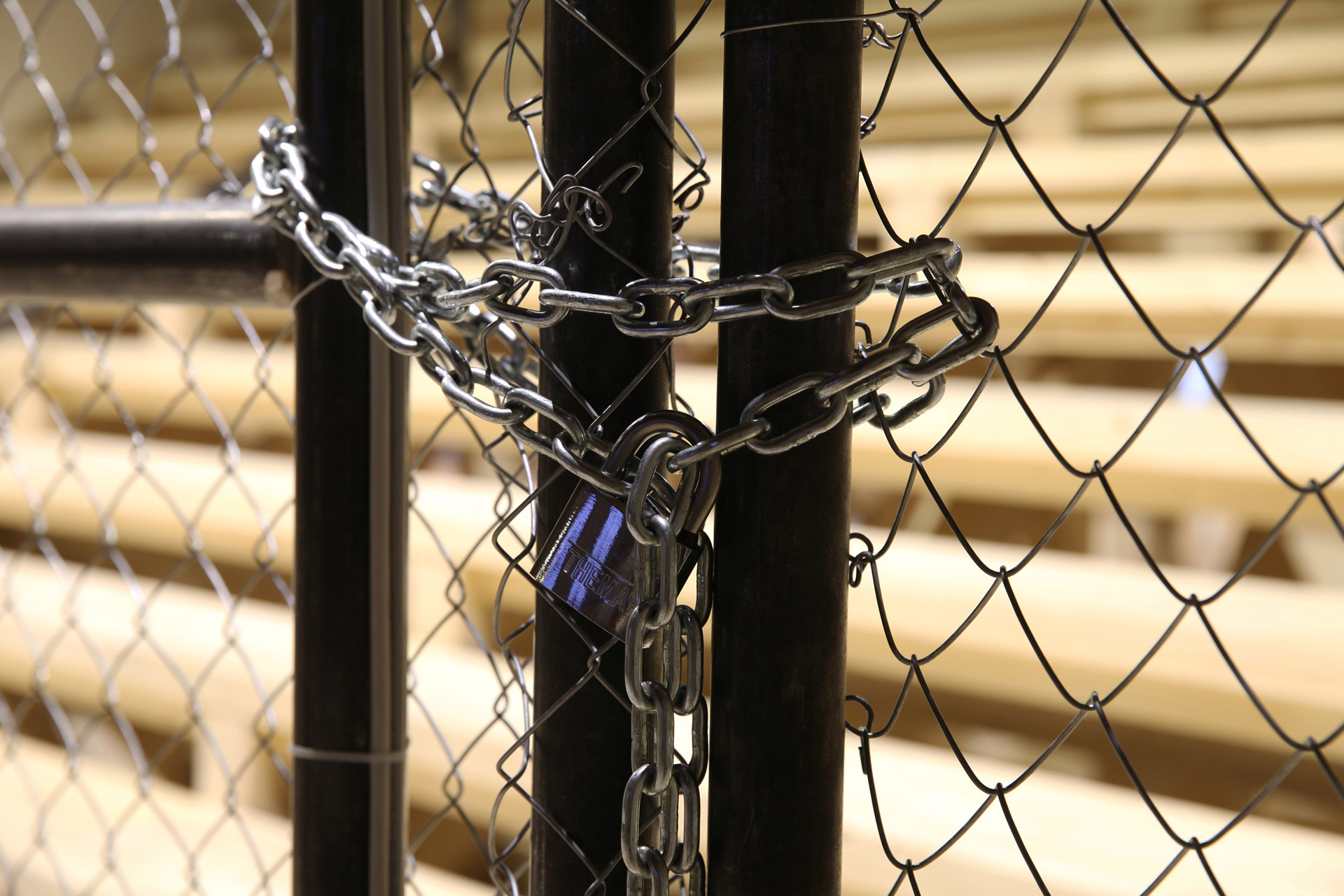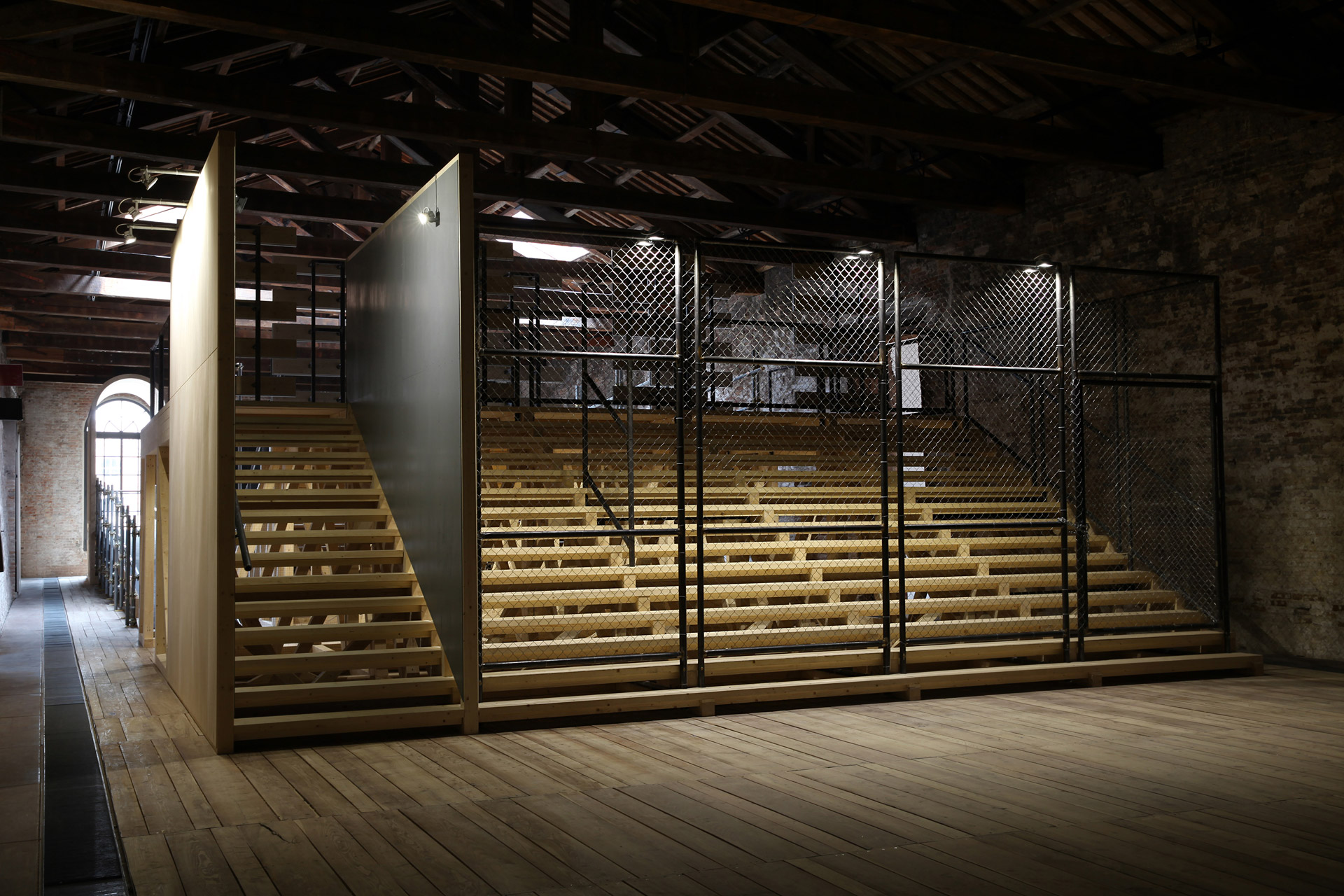ÇIN by CEVDET EREK
“In times like these, we’re in dire need of art to grow hope, to communicate, and to open closed minds and public spaces,” says Cevdet Erek as he gazes at the Bosphorus from a café in Rumeli Fortress. He asked himself “What should we display at Turkish pavilion in a time like this?” with a similar thought in mind while he set off to create his work ÇIN, which is displayed at Turkish pavilion at Venice Biennale. After months of hard work, he created a spatial installation that focuses on architecture and sound, and has been praised by international media. We met him in Istanbul right after the opening of the 57th Venice Biennale International Art Exhibition.
Let’s begin with the Venice Biennale. Where do you place your work, ÇIN, in your career?
It’s definitely very important. There’s a difference in me participating a group exhibition and creating a solo one. Firstly, it’s Turkish pavilion. It’s important to be invited to an international gathering where over 100 artists are present to represent 86 countries in such a critical time for a country like Turkey. Another aspect was that it had a bigger scope and a longer working process. There were many organizations and establishments involved.
Were you thinking about these elements while creating the work and how do they affect you?
Of course, I was. You begin these kinds of things by thinking about who you’re collaborating with. On one hand, there’s a country, a republic, some of its organizations, numerous sponsors, and supportive organizations. On the other hand, there’s your belief in experimentalism and unique collaborations in addition to a method that’s built on this approach. Therefore, there are these factors in one corner of your mind; you even direct your work based on this situation. You know that this work is for Turkish pavilion. You ask yourself “What should we display at Turkish pavilion in a time like this?” So, it’s not just a work that merely resulted from my curiosity.

ÇIN (2017), Cevdet Erek, 57. Venedik Bienali Türkiye Pavyonu, Fotoğraf: RMphotostudio
While talking about ÇIN, you emphasize the relationship between you and space. Where did you start off when you were building this relationship?
Whether architecture, sound or another field, I usually work with space. Thus, it was important to know the physical conditions of the Turkish pavilion in the Venice Biennale. I didn’t choose the venue. That venue was assigned a long time ago, and will continue to serve as the Turkish pavilion for long years. Therefore, I paid special attention to the space, its surroundings, and the exhibition area. My work would probably be seen after nearly 100 works along the route. There were many aspects to take into consideration. ÇIN isn’t a work I built in my workshop and transported there. On the contrary, I just packed my computer and microphones, and everything was built there. Due to the fact that it focused on space and the idea of space, it was one of the high- scope works. These are all important factors to keep in mind.
ÇIN has considerable parallelisms with your past. How does it all connect?
I’ve done some works for the Istanbul Biennial, dOCUMENTA, in Bristol, and for MAXXI where architecture is transformed and expanded and which usually feature a sound system. It was preceded by a portfolio of these kinds of works. We drifted off from the idea “to adorn an architectural façade with sound rather than visuals.” There’s also this in addition to it being based on architecture. Throughout the working process, I also examined my previous works to gather some ideas.
You’ve received positive feedback from international press. How does this feel?
We’ve received great feedback. Some visitors from Turkey even cried. I think it’s partly because the current situation Turkey is in because the work also features a harsh aspect as we utilized a part of the venue as public space you’re not allowed to enter. But you have to remember one thing – Venice Biennale is such a huge event that most people search and find works that resonate with their tastes. There’s no such thing as “Everyone things mine is the best.” There are hundreds of authors and hundreds of countries. But I did enjoy the reviews of course.
While creating your work, have you interacted with previous works displayed at the Turkish pavilion in the Venice Biennale?
Sarkis’s work was displayed in this venue. There were also two Venice Architecture Biennales held in the same place. When they moved to the new venue, I remember thinking “What would I do if I were asked?” Sarkis’s work also tried to build a relationship with space. I remember interacting and spending time with his work. I think we’re in the same frequency. You never know what Turkey is up to but it seems that the pavilion will be there for 20-30 years. Therefore, this venue’s future seems to be longer than its past. I’m happy to be one of the links in that chain. I think about how my work will speak to other artists that will follow.
How does working with different disciplines affect your creative process?
I didn’t set off to “work with different disciplines.” I took an interested in different fields at different times. I was studying architecture when I was in a band. I also was interested in visual arts. I benefited a lot from these fast transitions between disciplines and their unique languages. Most of us have this big problem; we beat people with knowledge while talking to them. We don’t care if we’re understood or not. We speak the language we know and forget that the other party may not understand it. In this regard, working with multiple disciplines helped me a lot.
How much difference is there when you begin a work and finish it?
Sometime a lot – Venice is a bit different. We worked on at least 100 sketches so there’s not much deviation in that. However, there were some improvisations during construction such as materials. For sound, I had this rule that I’d create the sounds when the architectural structure was completed. But all was composed during construction, which wasn’t that big of a surprise. However, the final outcome was much different than what was on paper. It’s also unknown what will happen six months later when the biennale is finished. There’s this vast structure that can be disassembled and assembled again. Someone may even come up and say to use it this way. So, the work may have a whole other future. I don’t know about that.

ÇIN (2017), Cevdet Erek, 57. Venedik Bienali Türkiye Pavyonu, Fotoğraf: RMphotostudio
What can you say about cultural production in Turkey in these times?
We have to create and keep on. I wouldn’t want to compare but ‘90s were also hard and grey times for Turkey. It even bore the signals of current times. A part of Turkey was fighting a war, and most of us didn’t even know about it. We were in college so we had the opportunity to learn things from outside the mainstream media thanks to our friends from many backgrounds. So, we were already a pessimistic youth. I don’t mean to say that Turkey was always in a bad situation but it wasn’t good for most of the time. It’s the same for our parents’ generation, and the rest of the history of the republic. Art is one of the best ways to reach people in times like these. We’re in dire need of art to grow hope, to communicate, and to open closed minds and public spaces.
What do you think about art production in Turkey? Is there anything that captures your interest?
Lately, we’re seeing news like “Galleries are being closed, and organizations are not good,” but I think there’s also this strange and smart production of art. I’m not pessimistic about this at all. There are all these new works. I’m more interested in the approach rather than content. There are hundreds of new things.
What kinds of differences you see when you compare the art scene in Turkey with those in Venice and the rest of the world?
I feel sad about one thing; you see all these organizations collaborate with each other whether it’s private or public. I saw that they don’t have these giant gaps and animosities we experience; this “us and them” situation. Then you think to yourself, “How did we come here?” We’re sitting here at Rumeli Fortress. You don’t feel it right now but it’s like paradise. We have this ability to perfectly shut down some things in our minds, but on the other hand, it’s very dangerous. We see the best use of these abilities in places such as Tel Aviv and Beirut. As I said, Turkey has never been in a great place. But I feel sad to see such animosity, especially towards free thinking and individual thoughts. Because humankind has this lovely gem. But maybe we’re not aware yet; maybe these hard times will give life to spectacular movies and music.
In addition to our domestic segregation, how do you evaluate our connection with the rest of the world?
I don’t feel segregated in that regard; I’ve put together many exhibitions abroad. I also have a very firm connection with Turkey. Contemporary art has this strong connection with the international scene. Unaware of what they’re doing, you can get stuck in your own haead here. These kinds of breaks go me a lot of good.
Lastly, I want to ask about music. Do you have anything coming up?
I did a two-day recording in Berlin. I’ll be releasing a solo drum album in about a month, titled “Davul.” It’s an experimental work. My old band, Nekropsi, is just a chat group on WhatsApp. Everyone is buried in their lives. (laughs)